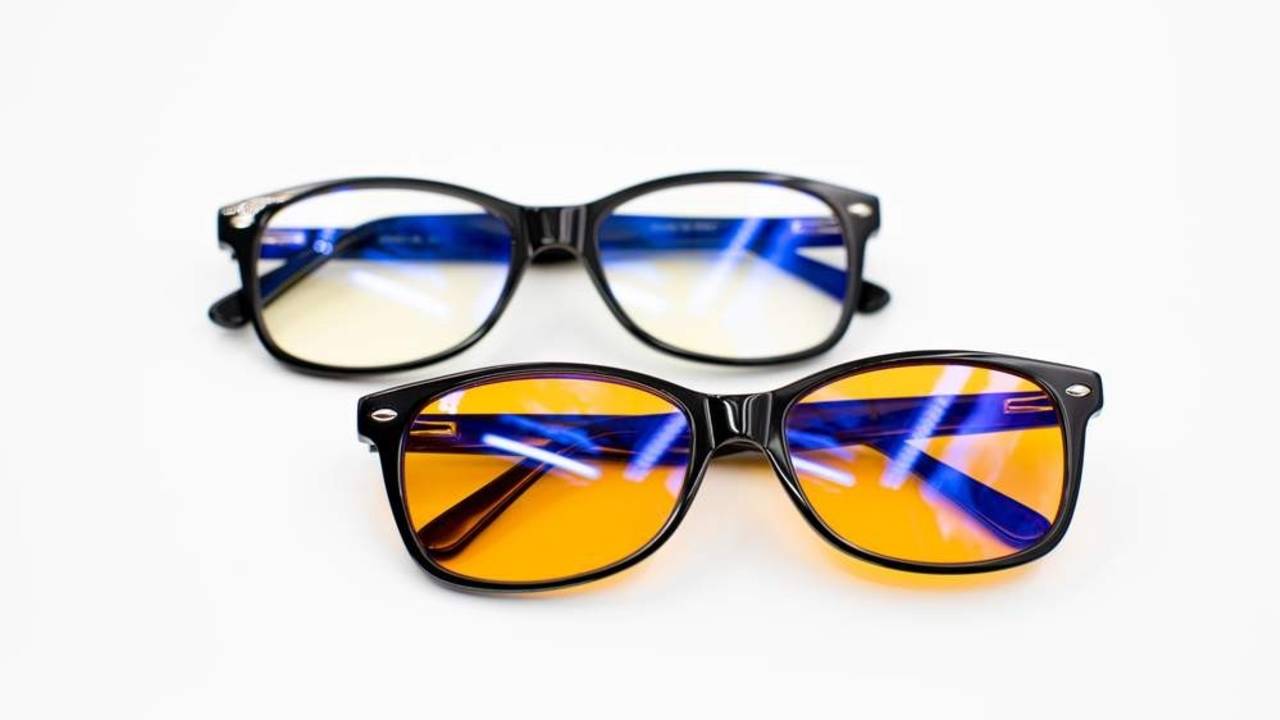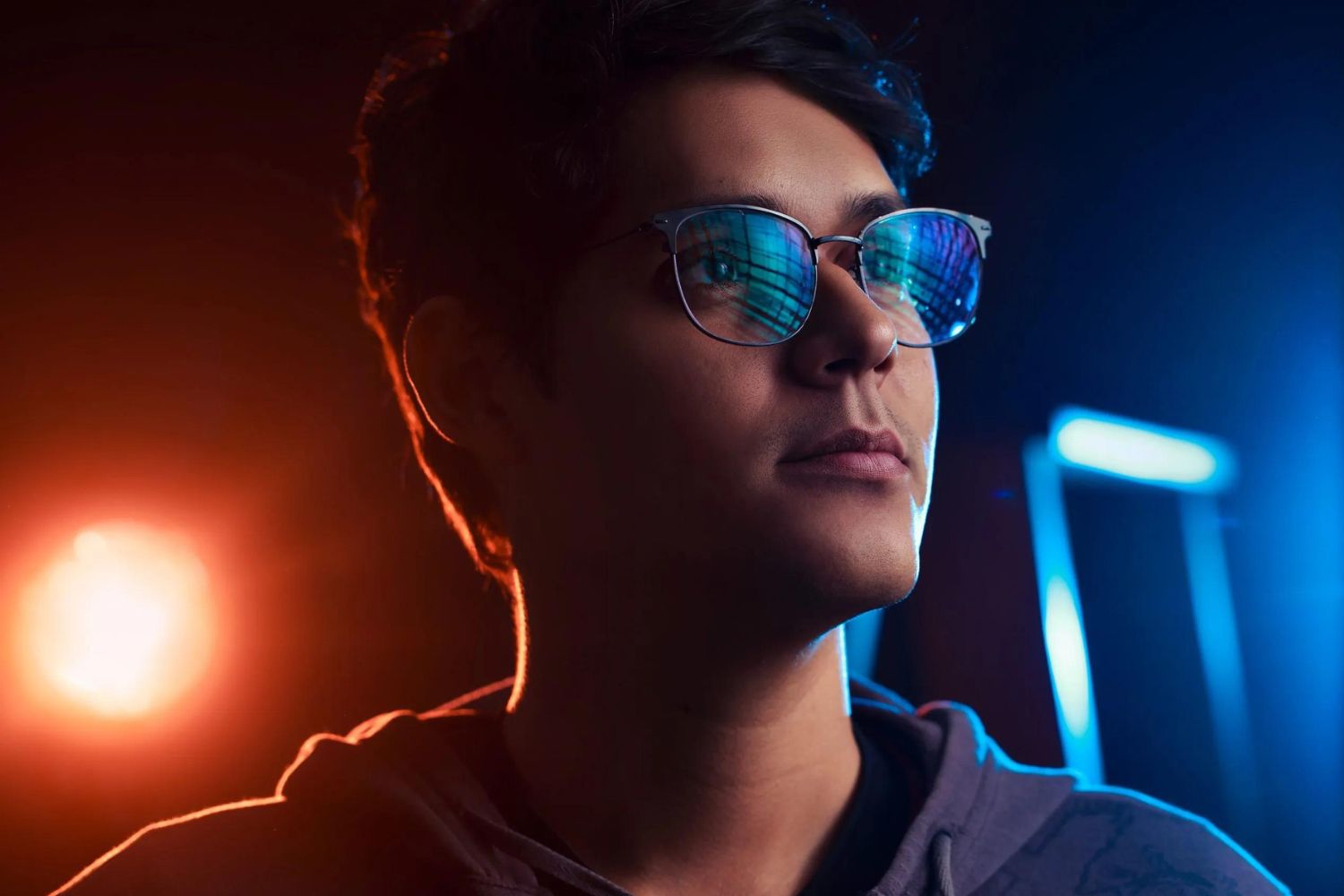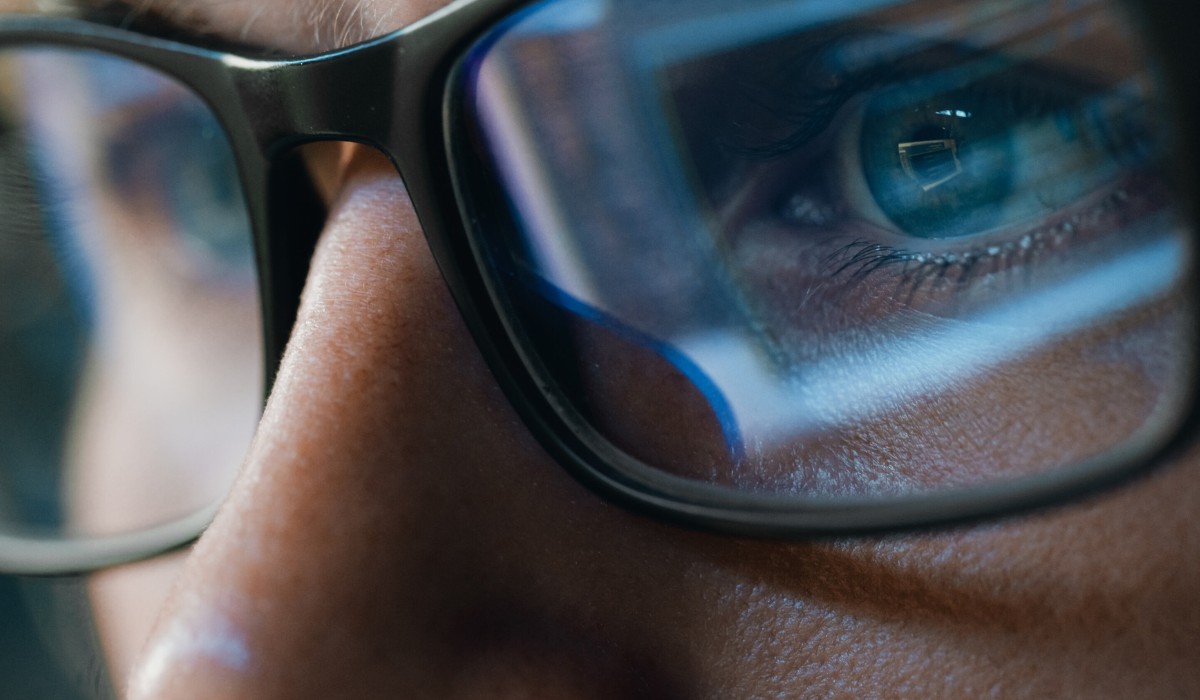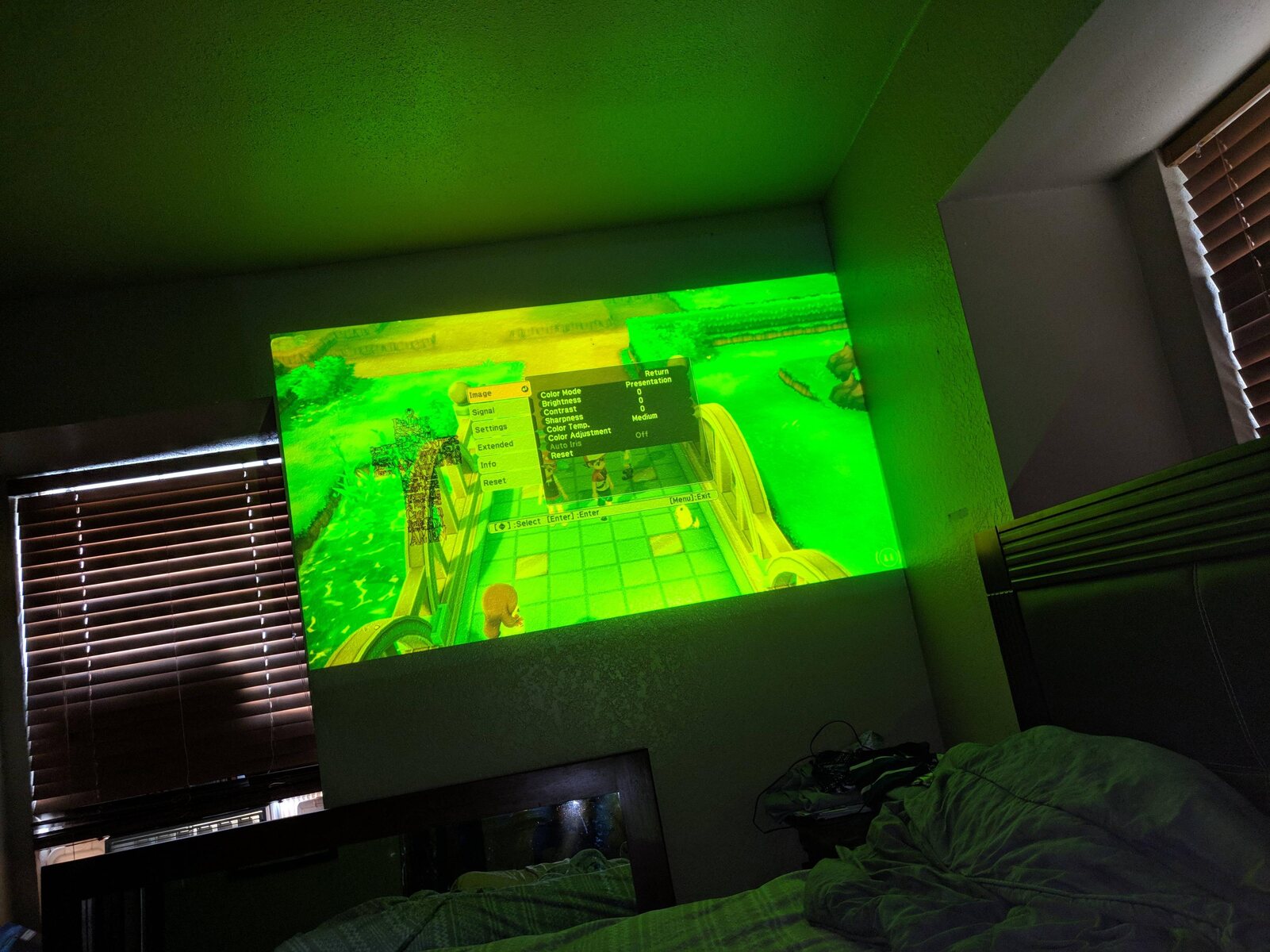Introduction
In today's digital age, our lives are intertwined with technology, from the moment we wake up to the time we finally lay our heads to rest. Whether it's working on a computer, scrolling through social media on a smartphone, or binge-watching our favorite shows on a tablet, we are constantly exposed to screens emitting blue light. While these devices have undoubtedly made our lives more convenient, the prolonged exposure to blue light can take a toll on our eyes and overall well-being.
As we delve into the world of blue light glasses, it's essential to understand the impact of blue light on our eyes and the innovative solutions that have emerged to address this concern. With the rise in digital device usage, the potential adverse effects of blue light have garnered widespread attention, prompting individuals to seek effective ways to mitigate its impact. This has given rise to the popularity of blue light glasses, which are designed to offer protection and alleviate the strain caused by prolonged screen time.
In this comprehensive guide, we will unravel the mysteries surrounding blue light, explore the functionality of blue light glasses, and shed light on the intriguing purpose of the yellow tint found in these specialized eyewear. By the end of this journey, you will gain valuable insights into the benefits of blue light glasses and the factors to consider when selecting the most suitable pair for your unique needs.
Join us as we embark on a captivating exploration of blue light glasses and uncover the science behind the yellow tint, offering a deeper understanding of how this innovative eyewear can positively impact our daily lives.
What is Blue Light and its Effects on Eyes?
Blue light is a high-energy, short-wavelength light that is emitted by the sun and various digital devices, including smartphones, computers, and LED lighting. While exposure to natural blue light during the day can have positive effects on our mood and cognitive function, prolonged exposure to artificial sources of blue light, especially in the evening, can lead to several adverse effects on our eyes and overall well-being.
The human eye is not very efficient at blocking blue light, and as a result, a significant portion of it reaches the light-sensitive retina at the back of the eye. This exposure can lead to digital eye strain, also known as computer vision syndrome, which encompasses a range of symptoms such as dry eyes, blurred vision, headaches, and difficulty focusing. Additionally, studies have suggested that excessive exposure to blue light, particularly in the evening, can disrupt our circadian rhythm and negatively impact sleep quality.
The potential long-term effects of blue light exposure on ocular health have also raised concerns. Research indicates that prolonged exposure to blue light may contribute to the development of age-related macular degeneration (AMD), a leading cause of vision loss. Furthermore, blue light has been linked to the acceleration of oxidative stress in retinal cells, which can potentially lead to retinal damage over time.
It is important to note that children may be particularly vulnerable to the effects of blue light due to their developing eyes. With the increasing integration of digital devices into educational settings and recreational activities, the impact of blue light on children's vision and overall health has become a subject of growing interest and concern.
In light of these potential effects, it is crucial to explore proactive measures to mitigate the impact of blue light on our eyes. This has led to the development of blue light glasses, which are designed to filter out a portion of blue light and alleviate the strain caused by prolonged screen time. These specialized glasses have gained popularity as a practical solution to safeguard ocular health in the digital age.
Understanding the effects of blue light on our eyes is the first step towards implementing effective strategies to protect our vision and well-being in an increasingly digital world. By gaining insight into the potential consequences of blue light exposure, individuals can make informed decisions and take proactive measures to prioritize the health of their eyes.
How Do Blue Light Glasses Work?
Blue light glasses, also known as blue light blocking glasses, are designed with specialized lenses that work to reduce the amount of blue light that reaches the eyes. These lenses are crafted using advanced technology to selectively filter out a portion of the high-energy blue light emitted by digital screens, thus minimizing the potential adverse effects associated with prolonged exposure.
The key component of blue light glasses is the lens material, which incorporates a special filter that targets the specific wavelengths of blue light. This filtering process is crucial in mitigating the potential strain on the eyes and the disruption of the circadian rhythm caused by excessive blue light exposure. By strategically attenuating the transmission of blue light, these glasses aim to create a more comfortable viewing experience while providing a layer of protection for the eyes.
The effectiveness of blue light glasses in reducing blue light exposure is attributed to the incorporation of blue light filtering technology within the lens material. This technology allows the glasses to selectively block a portion of blue light wavelengths, particularly those in the range of 380 to 500 nanometers, which are known to have a higher potential for causing eye strain and disrupting sleep patterns.
It is important to note that not all blue light glasses are created equal. The quality and efficacy of blue light blocking lenses can vary based on factors such as the specific filtering technology utilized, the percentage of blue light blocked, and the overall design of the glasses. Therefore, individuals seeking blue light glasses should prioritize reputable brands and products that have been tested and verified for their ability to effectively reduce blue light exposure.
In essence, blue light glasses function as a proactive measure to minimize the impact of blue light on the eyes, providing a practical solution for individuals who spend extended periods in front of digital screens. By incorporating advanced filtering technology into the lens material, these specialized glasses offer a tangible way to address the challenges posed by excessive blue light exposure in today's technology-driven world.
The functionality of blue light glasses underscores the innovative approach to promoting ocular health in the digital age, offering individuals a valuable tool to mitigate the potential adverse effects of prolonged screen time. As the demand for blue light glasses continues to rise, the ongoing refinement of blue light filtering technology is poised to further enhance the effectiveness of these specialized eyewear, catering to the evolving needs of modern-day individuals seeking to safeguard their visual well-being.
The Purpose of the Yellow Tint in Blue Light Glasses
The distinctive yellow tint found in some blue light glasses serves a specific and essential purpose in enhancing their functionality. While blue light glasses are primarily designed to reduce the exposure to high-energy blue light emitted by digital screens, the incorporation of a yellow tint introduces an additional layer of optical optimization.
The yellow tint in blue light glasses is strategically chosen to complement the filtering properties of the lenses, working in tandem to provide a comprehensive solution for minimizing the potential strain on the eyes. This tint is carefully calibrated to selectively enhance contrast and visual clarity, contributing to an improved viewing experience, especially in challenging lighting conditions.
The specific shade of yellow utilized in these glasses is engineered to target the blue light spectrum effectively. By incorporating a yellow hue that complements the natural characteristics of the human eye, these glasses aim to minimize visual distortion and enhance overall visual acuity. This is particularly beneficial for individuals who spend prolonged periods in front of digital screens, as the yellow tint can help alleviate the visual discomfort associated with extended screen time.
Furthermore, the yellow tint serves as a means of reducing the overall brightness of the visual environment, thereby promoting a more comfortable and balanced viewing experience. This can be especially advantageous in situations where individuals are exposed to harsh artificial lighting or glare, as the yellow tint works to mitigate the potential glare-induced strain on the eyes, fostering a more relaxed and accommodating visual environment.
In essence, the purpose of the yellow tint in blue light glasses extends beyond the mere aesthetic appeal, encompassing a strategic and functional role in optimizing the visual experience for individuals exposed to digital screens. By harmonizing the filtering properties of the lenses with the visual enhancements offered by the yellow tint, these specialized glasses aim to deliver a holistic solution that addresses both the physiological and perceptual aspects of prolonged screen time.
The integration of the yellow tint into blue light glasses underscores the commitment to providing a comprehensive and tailored approach to ocular health in the digital age. As individuals seek effective strategies to mitigate the impact of blue light on their eyes, the purposeful inclusion of the yellow tint in these specialized glasses exemplifies the innovative fusion of science and design, catering to the evolving needs of modern-day individuals striving to prioritize their visual well-being.
Benefits of the Yellow Tint
The yellow tint present in blue light glasses offers a myriad of benefits that extend beyond its distinctive appearance. This specialized tint plays a pivotal role in enhancing the overall visual experience for individuals exposed to digital screens, providing a range of tangible advantages that contribute to ocular comfort and visual acuity.
1. Contrast Enhancement
The yellow tint in blue light glasses is adept at selectively enhancing contrast, thereby augmenting the perceptual clarity of digital content. By fine-tuning the visual spectrum, the tint works to sharpen the distinction between different elements on the screen, resulting in improved readability and reduced visual strain. This heightened contrast is particularly valuable when viewing text, images, or graphics on electronic devices, as it facilitates a more discerning and comfortable viewing experience.
2. Glare Reduction
One of the notable benefits of the yellow tint is its ability to mitigate the impact of glare from digital screens and artificial lighting. The tint effectively filters out excessive brightness and harsh glare, creating a more balanced and soothing visual environment. This reduction in glare-induced discomfort can significantly alleviate eye strain, particularly during extended periods of screen exposure, fostering a more relaxed and accommodating viewing experience.
3. Visual Comfort
The yellow tint contributes to an overall improvement in visual comfort by tempering the intensity of the visual stimuli encountered during screen time. This gentle modulation of brightness and color temperature serves to create a more soothing and harmonious visual environment, reducing the potential for visual fatigue and discomfort. As a result, individuals can engage with digital content for longer durations without experiencing the same level of visual strain commonly associated with prolonged screen time.
4. Circadian Rhythm Regulation
In addition to its immediate perceptual benefits, the yellow tint in blue light glasses aids in regulating the body's circadian rhythm. By filtering out a portion of the high-energy blue light, especially during evening screen use, the tint helps minimize the disruptive impact of blue light on the body's natural sleep-wake cycle. This can contribute to improved sleep quality and overall well-being, aligning with the growing awareness of the importance of managing blue light exposure for optimal sleep patterns.
In essence, the incorporation of the yellow tint in blue light glasses offers a multifaceted approach to enhancing the visual experience and promoting ocular comfort in the digital age. By harnessing the perceptual and physiological benefits of the tint, these specialized glasses provide individuals with a valuable tool to mitigate the potential strain caused by prolonged screen time, underscoring the holistic and innovative nature of modern ocular health solutions.
Choosing the Right Blue Light Glasses
When it comes to selecting the right blue light glasses, several key factors should be taken into consideration to ensure that the chosen eyewear effectively addresses individual needs and preferences. The following guidelines can serve as a valuable framework for navigating the diverse array of options available in the market, empowering individuals to make informed decisions and prioritize their visual well-being.
1. Quality of Blue Light Filtering Technology
The efficacy of blue light glasses hinges on the quality of the filtering technology integrated into the lenses. It is essential to opt for glasses that have been rigorously tested and verified for their ability to selectively reduce blue light exposure while preserving visual clarity. Prioritize reputable brands and products that transparently communicate the specifics of their blue light filtering technology, including the percentage of blue light blocked and the targeted wavelength range.
2. Comfort and Fit
Comfort is paramount when selecting blue light glasses, especially for individuals who anticipate prolonged usage. The fit of the glasses should be snug yet comfortable, ensuring that they do not exert excessive pressure on the temples or bridge of the nose. Additionally, lightweight and ergonomic designs contribute to a more enjoyable wearing experience, allowing individuals to seamlessly integrate the glasses into their daily routines without compromising comfort.
3. Aesthetic Appeal and Style
While functionality is a primary consideration, the aesthetic appeal and style of the blue light glasses also play a significant role in the selection process. With a wide range of frame designs, colors, and shapes available, individuals can choose glasses that align with their personal style preferences. Whether seeking a sleek and contemporary look or a more classic and timeless design, the aesthetic aspect of the glasses should complement individual fashion sensibilities while delivering the desired ocular protection.
4. UV Protection
In addition to mitigating blue light exposure, the ideal blue light glasses should offer adequate UV protection to shield the eyes from harmful ultraviolet rays. This dual functionality ensures comprehensive eye protection, safeguarding against the potential long-term effects of UV radiation while addressing the immediate concerns related to blue light exposure. Prioritizing glasses with built-in UV protection reinforces a proactive approach to ocular health.
5. Transparent and Reliable Purchasing Channels
When procuring blue light glasses, it is advisable to utilize transparent and reliable purchasing channels to ensure the authenticity and quality of the eyewear. Whether through reputable optical stores, certified optometrists, or trusted online retailers, individuals should prioritize sources that provide comprehensive information about the product, including details about the lenses, frame materials, and relevant certifications.
By considering these essential factors, individuals can navigate the process of choosing the right blue light glasses with confidence, empowering themselves to make informed decisions that prioritize ocular health and visual comfort. The careful evaluation of filtering technology, comfort, style, UV protection, and purchasing channels serves as a strategic approach to selecting blue light glasses that align with individual needs and preferences, ultimately contributing to a more enjoyable and visually optimized experience in the digital age.
Conclusion
In conclusion, the pervasive presence of digital screens in our daily lives has underscored the importance of prioritizing ocular health and mitigating the potential adverse effects of blue light exposure. As we navigate the digital landscape, the emergence of blue light glasses has offered a proactive and innovative solution to address the challenges posed by prolonged screen time. These specialized glasses, equipped with advanced filtering technology and the distinctive yellow tint, represent a harmonious fusion of science and design, catering to the evolving needs of modern-day individuals striving to safeguard their visual well-being.
The journey into the realm of blue light glasses has revealed the multifaceted impact of blue light on our eyes and overall well-being. From the potential strain induced by prolonged screen exposure to the disruptive effects on circadian rhythm and sleep quality, the implications of excessive blue light exposure have prompted a collective pursuit of effective preventive measures. Blue light glasses have emerged as a practical and accessible tool to reduce blue light exposure, offering a tangible way to promote ocular comfort and visual acuity in the digital age.
The purposeful integration of the yellow tint in blue light glasses has unveiled a remarkable synergy between visual optimization and physiological protection. By selectively enhancing contrast, reducing glare, and fostering a more comfortable visual environment, the yellow tint contributes to an enriched viewing experience that transcends mere aesthetic appeal. Furthermore, the potential benefits of circadian rhythm regulation underscore the holistic approach of blue light glasses, aligning with the growing emphasis on managing blue light exposure for optimal sleep patterns.
As individuals navigate the process of selecting the right blue light glasses, the considerations of filtering technology, comfort, style, UV protection, and purchasing channels serve as guiding principles to empower informed decision-making. By embracing the convergence of functionality and fashion, individuals can seamlessly integrate blue light glasses into their daily routines, reaping the benefits of comprehensive eye protection and visual enhancement.
In essence, the exploration of blue light glasses and the purpose of the yellow tint has unveiled a captivating narrative of innovation and wellness in the digital era. As the demand for ocular health solutions continues to evolve, the enduring commitment to enhancing the functionality and efficacy of blue light glasses reflects a collective dedication to prioritizing visual well-being. By embracing the transformative potential of blue light glasses, individuals can embark on a journey towards a more visually optimized and comfortable digital experience, reinforcing the profound impact of proactive ocular health measures in our technologically driven world.

























